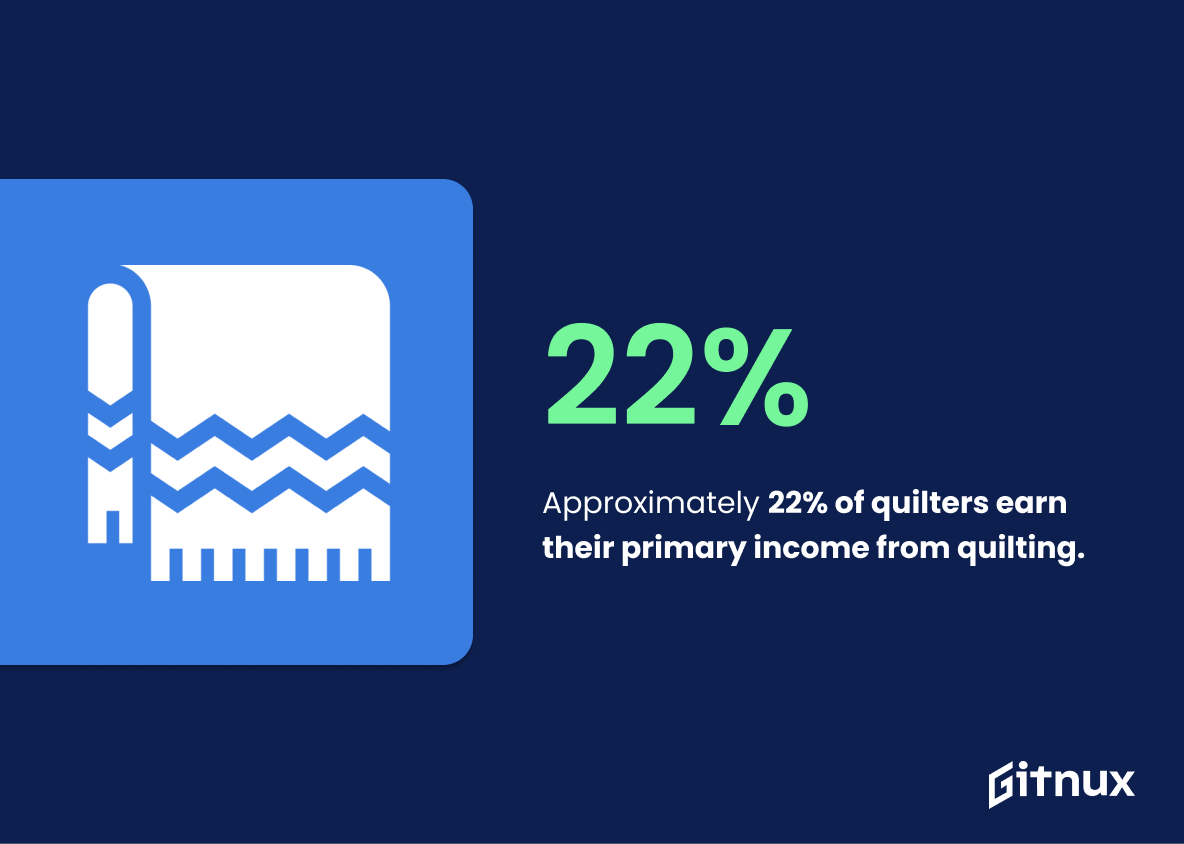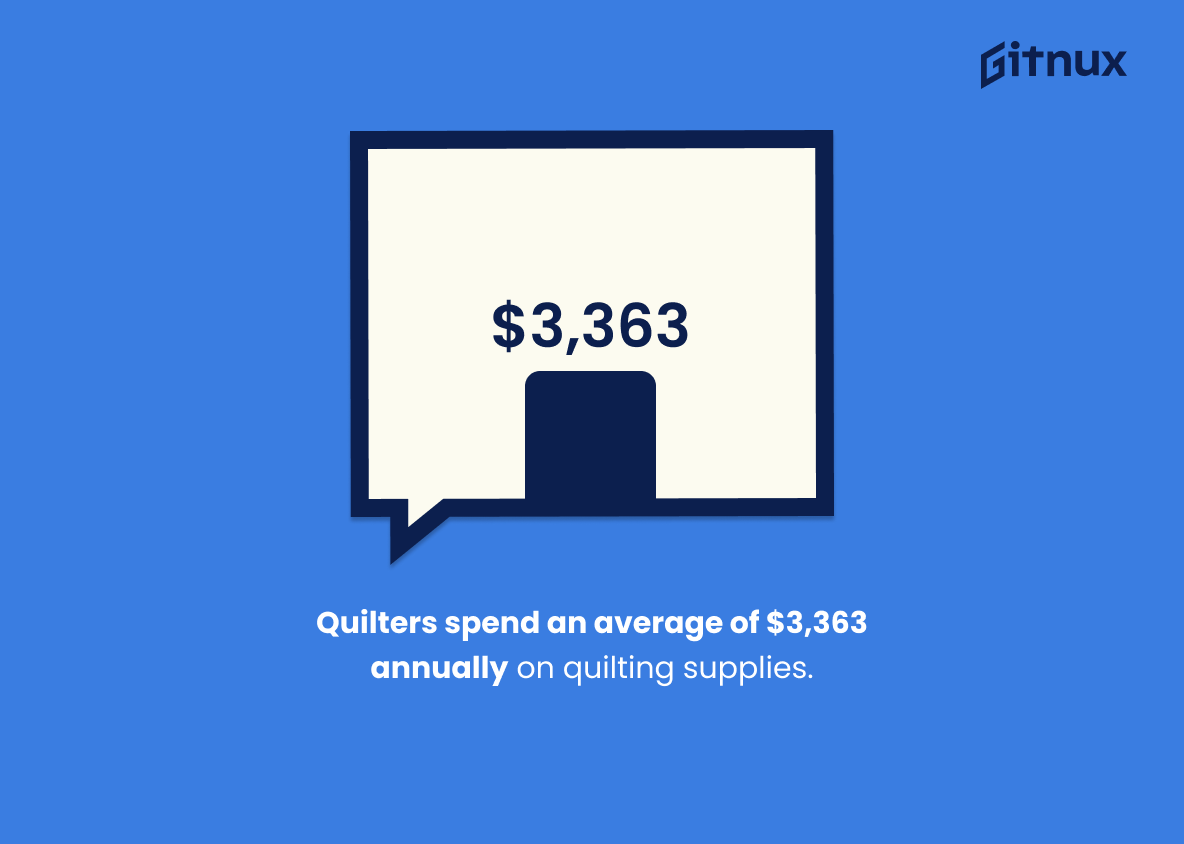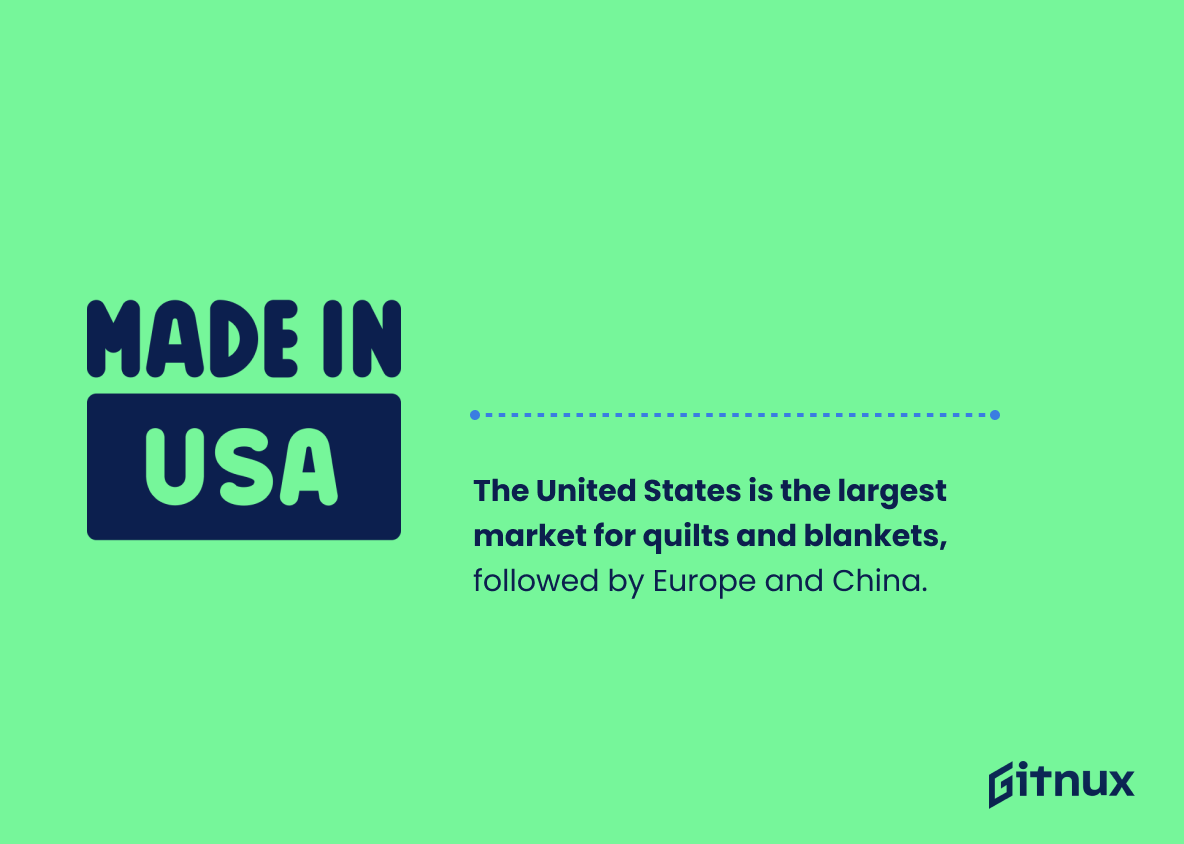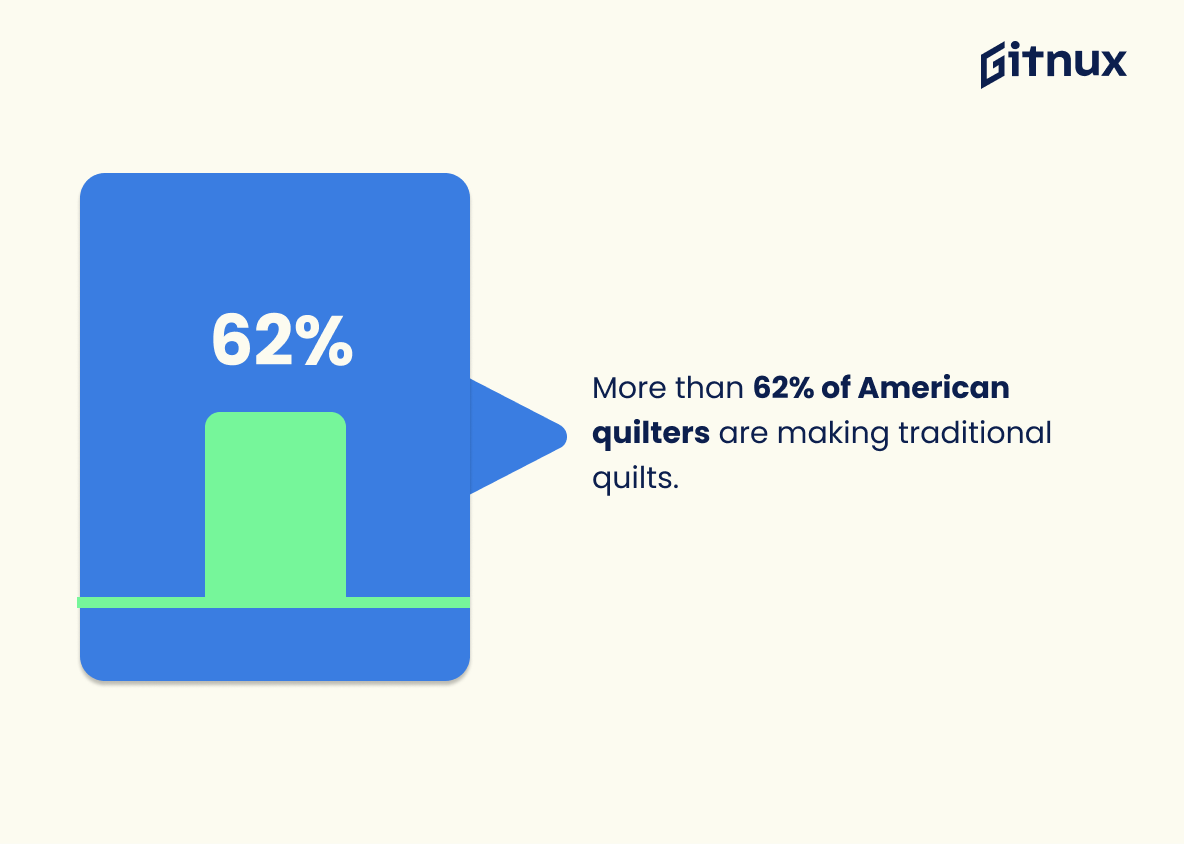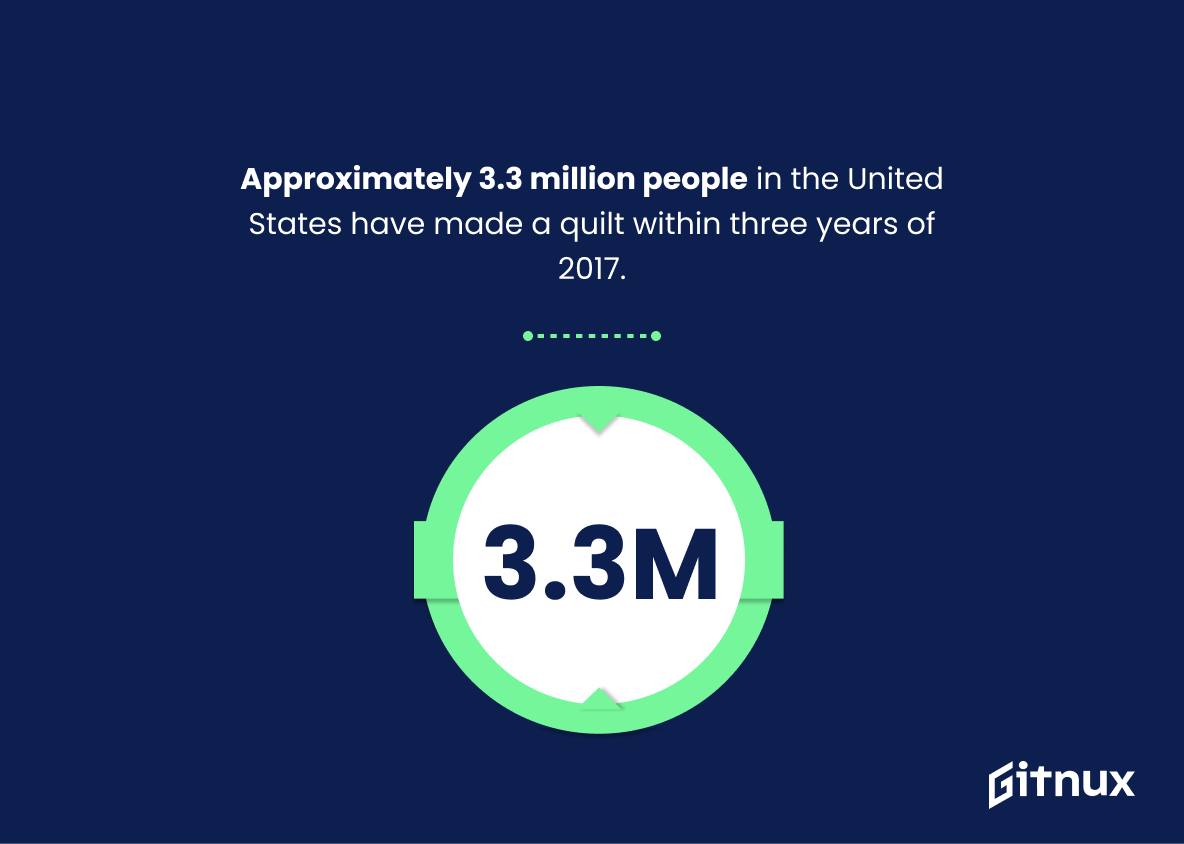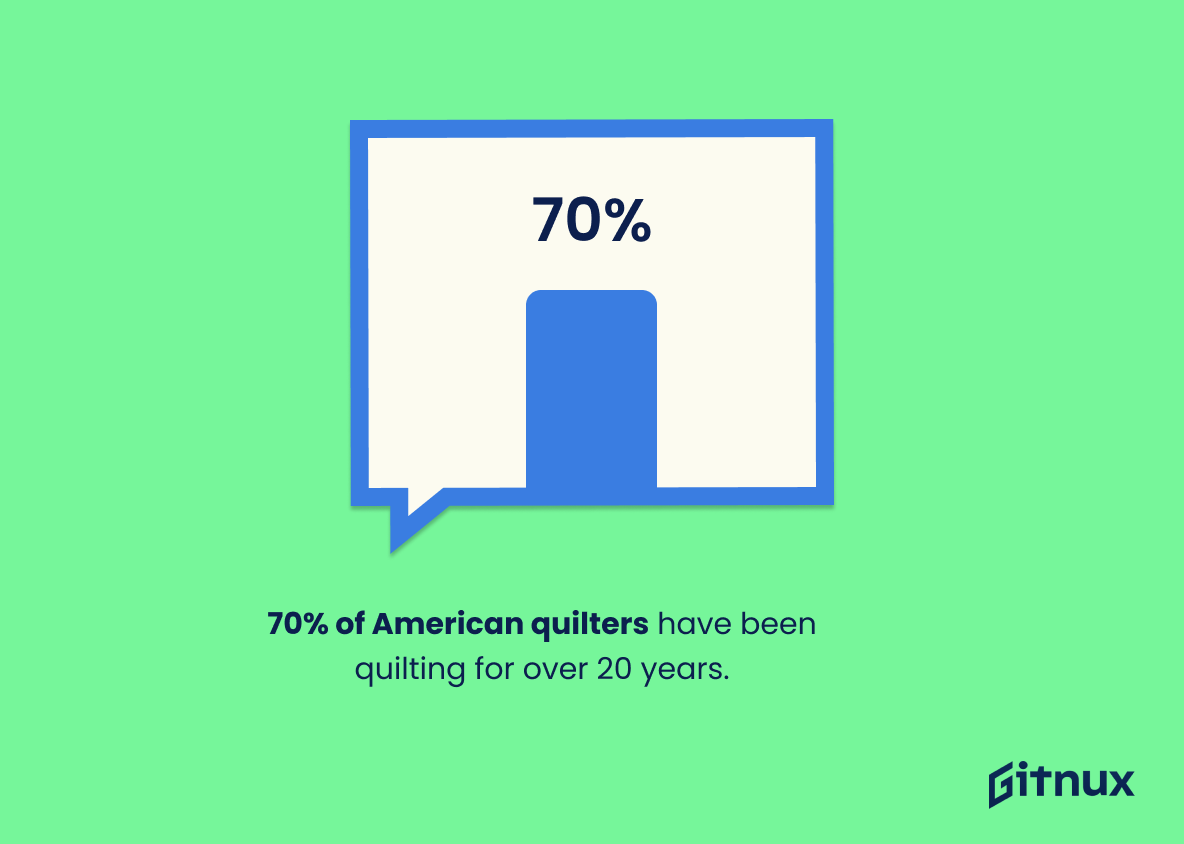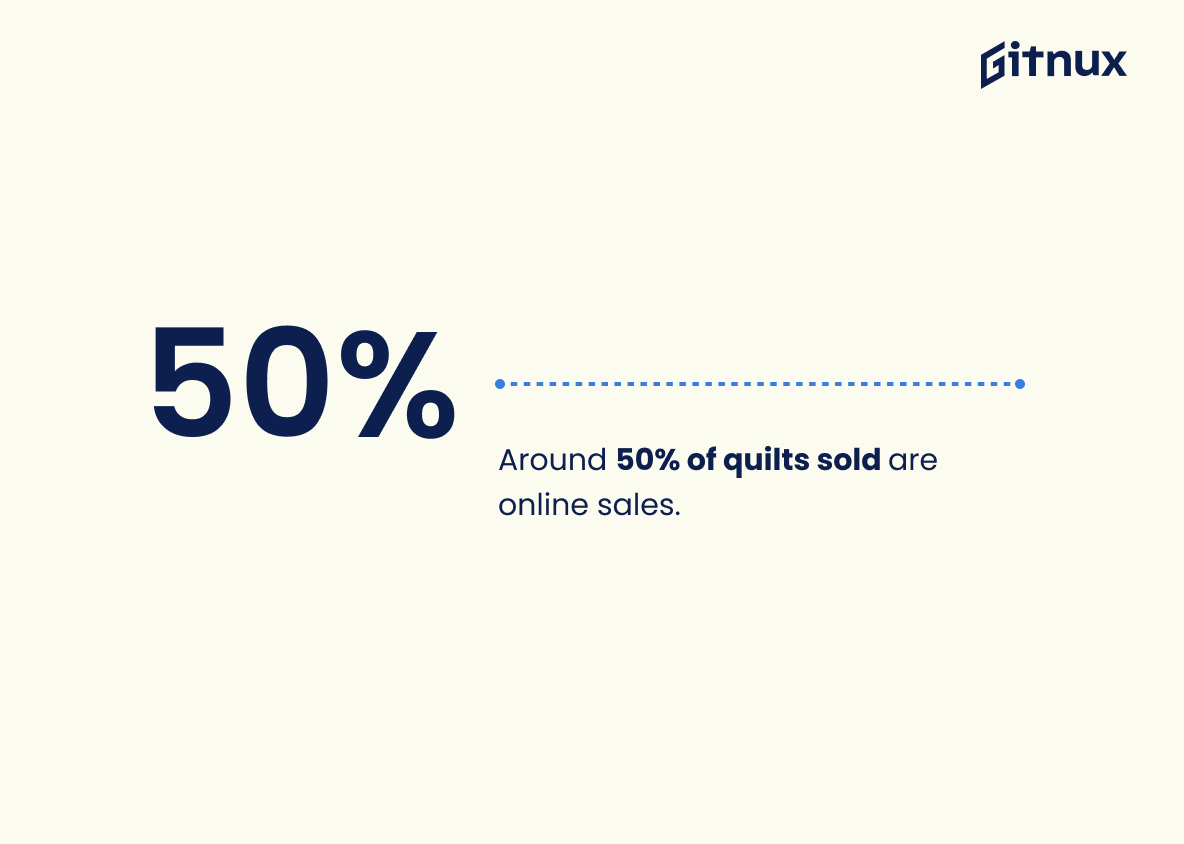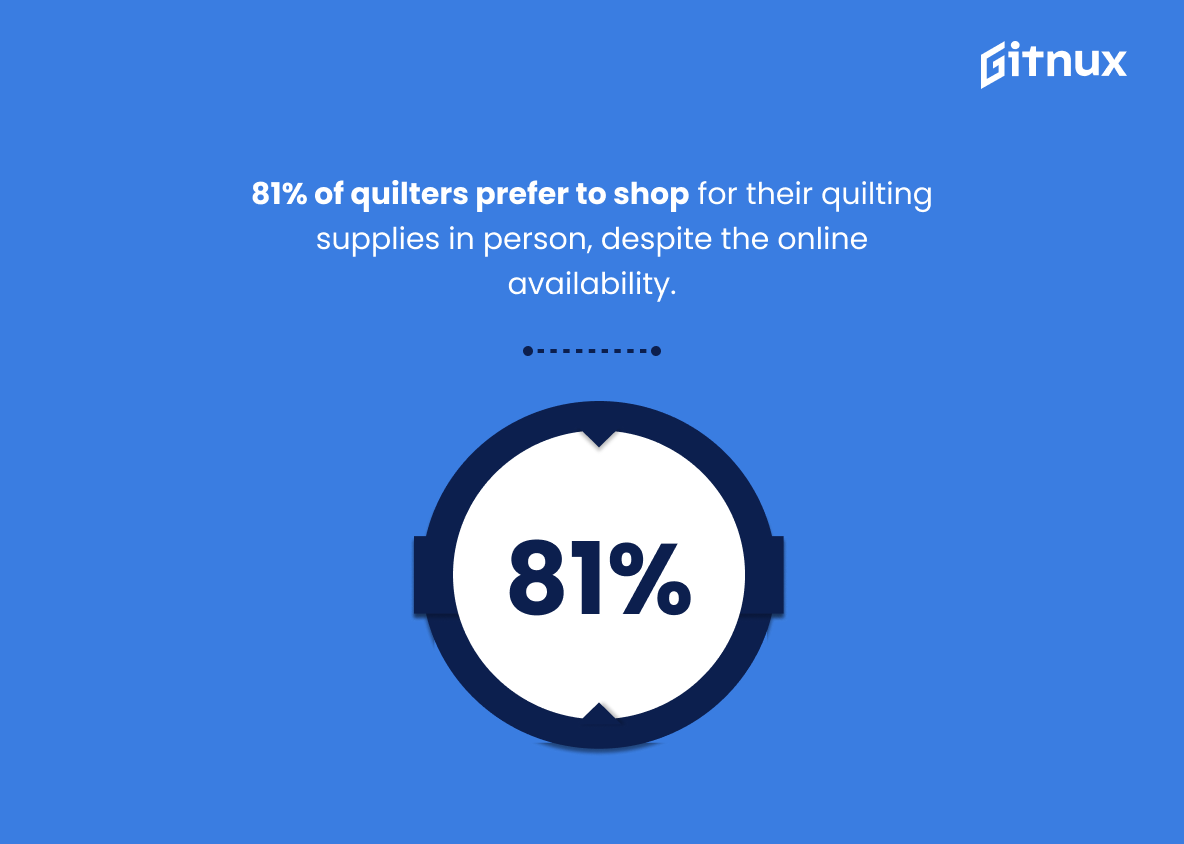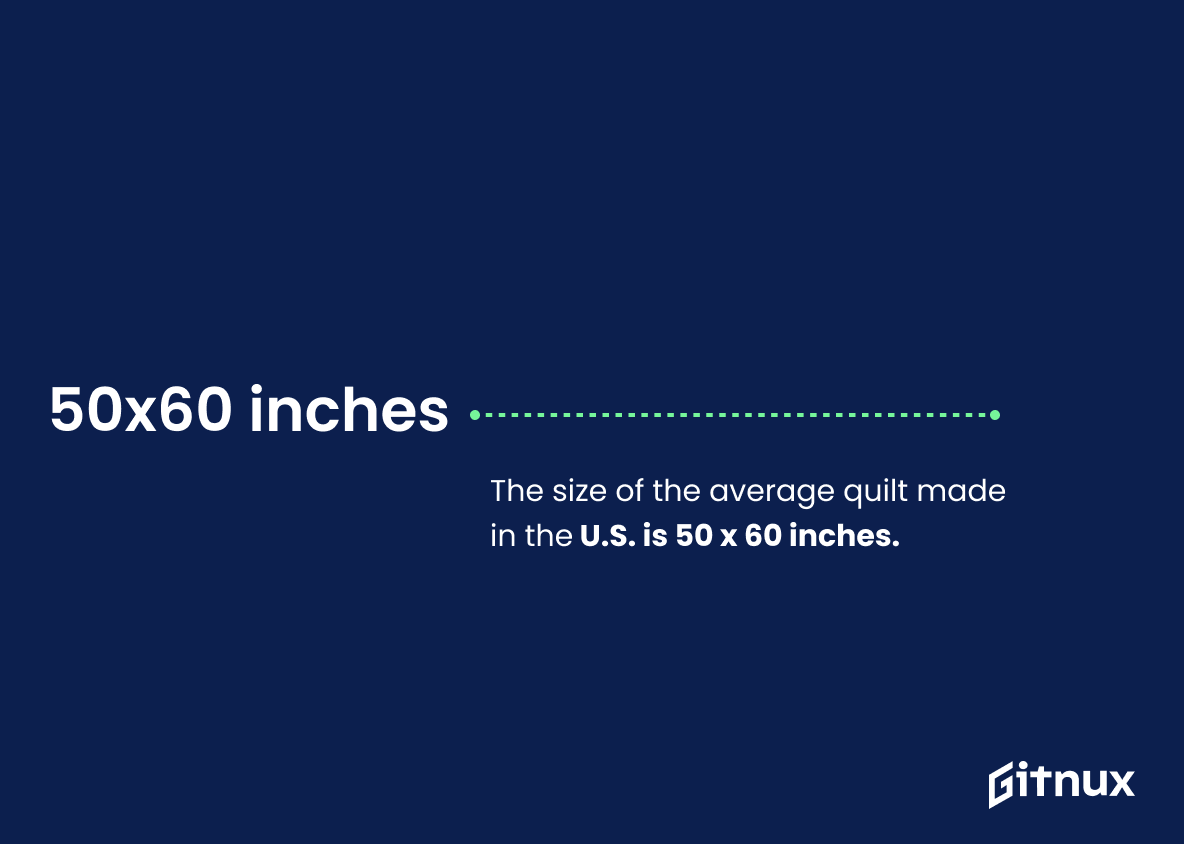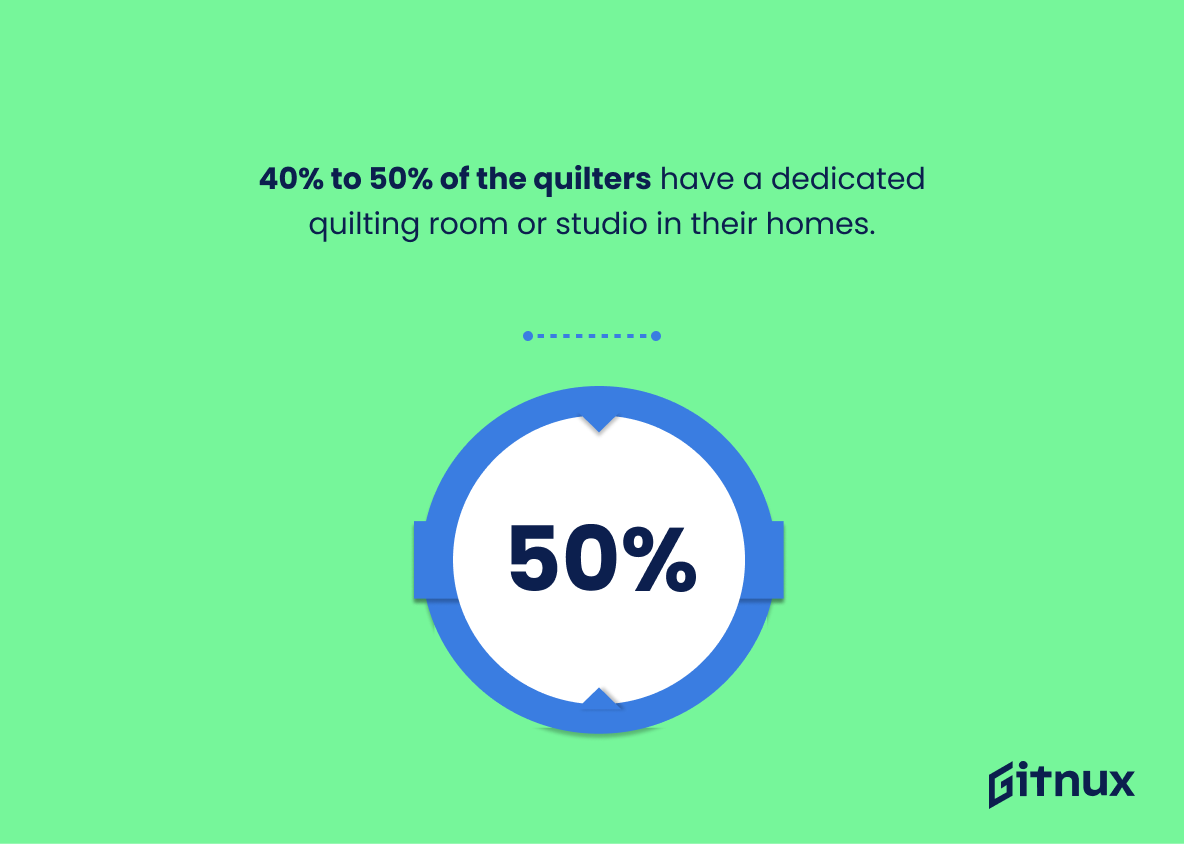The quilt industry is a thriving and ever-growing sector of the global economy. According to recent statistics, the global market value for quilts and blankets was $6.3 billion in 2020, with an expected growth rate of 3.5% between 2021 and 2026. Quilting has become more than just a hobby; approximately 22% of quilters earn their primary income from it, spending an average of $3,363 annually on supplies alone. The United States is currently the largest market for these products followed by Europe and China respectively.
In addition to this impressive economic impact, there are many other interesting facts about this craft that may surprise you: over 62% American quilters make traditional designs while 40%-50% have dedicated rooms or studios in their homes specifically for crafting purposes; 70% have been practicing it for over two decades now. Furthermore, around 50 percent sales come through online channels whereas 56 percent fabric purchases take place at local stores – making them important contributors as well. Finally yet importantly – 81 percent prefer shopping in person despite availability online – indicating how much they appreciate physical interaction when buying materials related to such creative activities like sewing or knitting etcetera… All these figures point towards one thing: Quilting isn’t going anywhere anytime soon.
This statistic is a testament to the immense size and scope of the quilt and blanket industry. It speaks to the sheer number of people who are buying and using these products, and the amount of money that is being generated by the industry. It also serves as a reminder of the importance of the quilt and blanket industry in the global economy, and the potential for growth in the future.
The quilt industry is expected to grow at a CAGR of 3.5% between 2021 and 2026.
This statistic is a crucial indicator of the quilt industry’s future prospects, as it suggests that the industry is likely to experience steady growth over the next five years. This is important information for anyone interested in the quilt industry, as it provides a glimpse into the potential opportunities and challenges that may arise in the near future. Furthermore, this statistic can be used to inform decisions about investments, marketing strategies, and other business decisions related to the quilt industry.
Quilt Industry Statistics Overview
Approximately 22% of quilters earn their primary income from quilting.
This statistic is a telling indication of the potential for quilting to be a viable source of income. It shows that quilting is not just a hobby, but a profession that can be relied upon to generate a steady income. This statistic is important to consider when discussing the quilt industry, as it demonstrates the potential for quilting to be a successful business.
Quilters spend an average of $3,363 annually on quilting supplies.
This statistic is a testament to the dedication of quilters and the financial commitment they make to their craft. It speaks to the passion and enthusiasm of quilters, who are willing to invest in the supplies they need to create beautiful quilts. It also highlights the potential of the quilting industry, as quilters are willing to spend a significant amount of money on supplies each year.
The United States is the largest market for quilts and blankets, followed by Europe and China.
This statistic is a testament to the immense size and scope of the quilt and blanket industry. It highlights the fact that the United States, Europe, and China are the three largest markets for these products, indicating that the industry is a major player in the global economy. This is an important point to consider when discussing the quilt industry, as it demonstrates the potential for growth and success in this sector.
More than 62% of American quilters are making traditional quilts.
This statistic is significant in the context of the blog post about Quilt Industry Statistics because it reveals the prevalence of traditional quilting among American quilters. It indicates that traditional quilting is still a popular activity among quilters, and that the quilt industry is likely to continue to be a thriving sector of the economy.
Approximately 3.3 million people in the United States have made a quilt within three years of 2017.
This statistic is a testament to the popularity of quilting in the United States. It shows that despite the rise of technology and other hobbies, quilting remains a beloved pastime for millions of Americans. This statistic is a reminder of the importance of quilting in our culture and the impact it has on our lives.
The average quilter is 63 years old and female.
This statistic is significant in the context of the blog post about Quilt Industry Statistics as it highlights the demographic of the majority of quilters. It is important to note that the majority of quilters are female and of a certain age, as this can help to inform the marketing and product development strategies of quilt-related businesses.
70% of American quilters have been quilting for over 20 years.
This statistic speaks volumes about the dedication and passion of American quilters. It shows that quilting is not just a passing hobby, but a craft that many have been devoted to for decades. This statistic is a testament to the longevity of the quilting industry and the dedication of its practitioners.
Around 50% of quilts sold are online sales.
This statistic is a telling indication of the changing landscape of the quilt industry. It shows that the industry is adapting to the digital age, with more and more customers opting to purchase quilts online. This shift in consumer behavior is an important factor to consider when discussing the current state of the quilt industry.
Quilters spend an average of 2 hours per day quilting.
This statistic is a testament to the dedication of quilters, demonstrating the amount of time and effort they put into their craft. It also speaks to the popularity of quilting, as it suggests that quilters are spending a significant amount of time on their projects. This statistic is an important indicator of the quilt industry’s success and the dedication of its practitioners.
81% of quilters prefer to shop for their quilting supplies in person, despite the online availability.
This statistic is significant in the context of Quilt Industry Statistics because it demonstrates the importance of physical stores in the quilting community. Despite the convenience of online shopping, the majority of quilters still prefer to shop for their supplies in person, indicating that the tactile experience of browsing and selecting fabrics and other materials is an integral part of the quilting process.
Advanced quilters own an average of 3 sewing machines.
This statistic is indicative of the dedication and commitment of advanced quilters to their craft. It speaks to the level of investment they are willing to make in order to perfect their art. It also speaks to the potential of the quilt industry, as advanced quilters are likely to purchase more supplies and materials to support their craft. This statistic is a testament to the passion and enthusiasm of quilters, and the potential of the quilt industry.
About 20% of quilters in the U.S. have membership in a quilt guild or club.
This statistic is significant in understanding the quilt industry because it reveals the level of engagement among quilters. It shows that a large portion of quilters are actively involved in the quilting community, which is essential for the growth and development of the industry. This statistic also indicates that quilters are passionate about their craft and are willing to invest their time and energy into it.
The size of the average quilt made in the U.S. is 50 x 60 inches.
This statistic is an important indicator of the quilt industry’s size and scope. It provides insight into the average size of quilts being produced in the United States, which can be used to gauge the demand for quilts of different sizes. Additionally, it can be used to compare the size of quilts made in the U.S. to those made in other countries, providing a better understanding of the global quilt industry.
There are more than 21 million quilters worldwide.
This statistic is a testament to the immense popularity of quilting, demonstrating that it is a beloved craft practiced by millions of people around the world. It speaks to the power of quilting to bring people together and create a vibrant, global community.
40% to 50% of the quilters have a dedicated quilting room or studio in their homes.
This statistic is significant in the context of Quilt Industry Statistics because it demonstrates the level of commitment and dedication that quilters have to their craft. It shows that quilting is not just a hobby for many, but a lifestyle that they are willing to invest in and dedicate a space to. This statistic speaks to the passion and enthusiasm of quilters and the importance of quilting in their lives.
Conclusion
The quilt industry is a thriving and growing market, with the global market value for quilts and blankets estimated to be $6.3 billion in 2020. This number is expected to grow at a CAGR of 3.5% between 2021 and 2026, driven by an increase in demand from both consumers and businesses alike. Approximately 22% of quilters earn their primary income from this craft, spending an average of $3,363 annually on supplies while donating 40-50% of their finished products to charities or other organizations. The United States remains the largest consumer base for these items followed closely by Europe and China; however there are over 21 million people worldwide who have taken up this hobby as well – 63 years old being the average age among them with 70% having been involved in it for more than two decades now. Quilting shops remain popular destinations despite online availability accounting for 50%, while 56% prefer buying fabric directly from such stores too – all leading towards making traditional pieces that measure around 50 x 60 inches usually.
References
0. – https://www.www.marketstudyreport.com
1. – https://www.worldpopulationreview.com
2. – https://www.justabitfrayed.wordpress.com
3. – https://www.www.sixtyandme.com
4. – https://www.www.quiltingdaily.com
